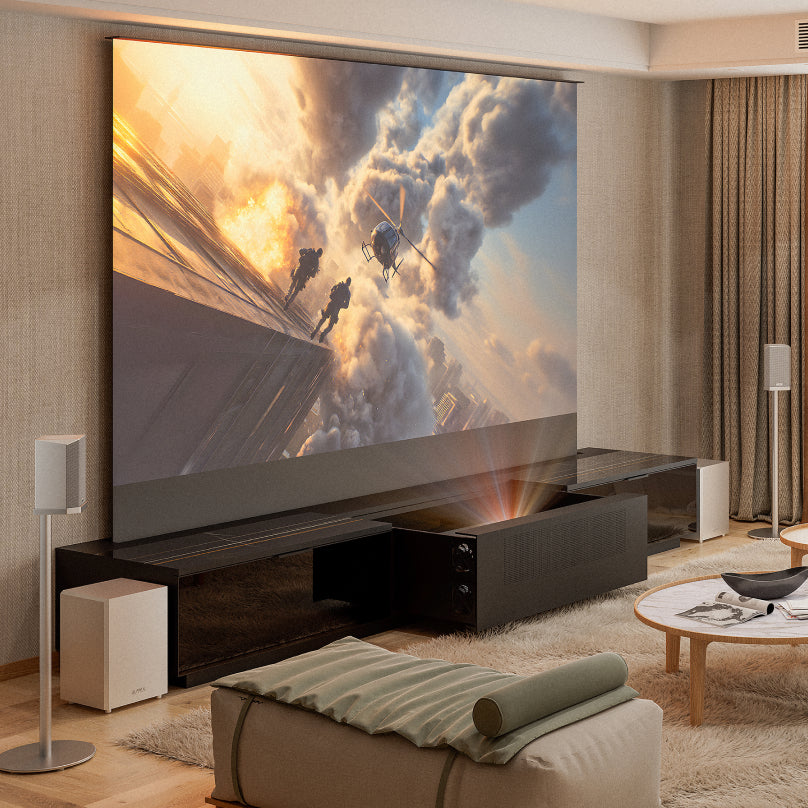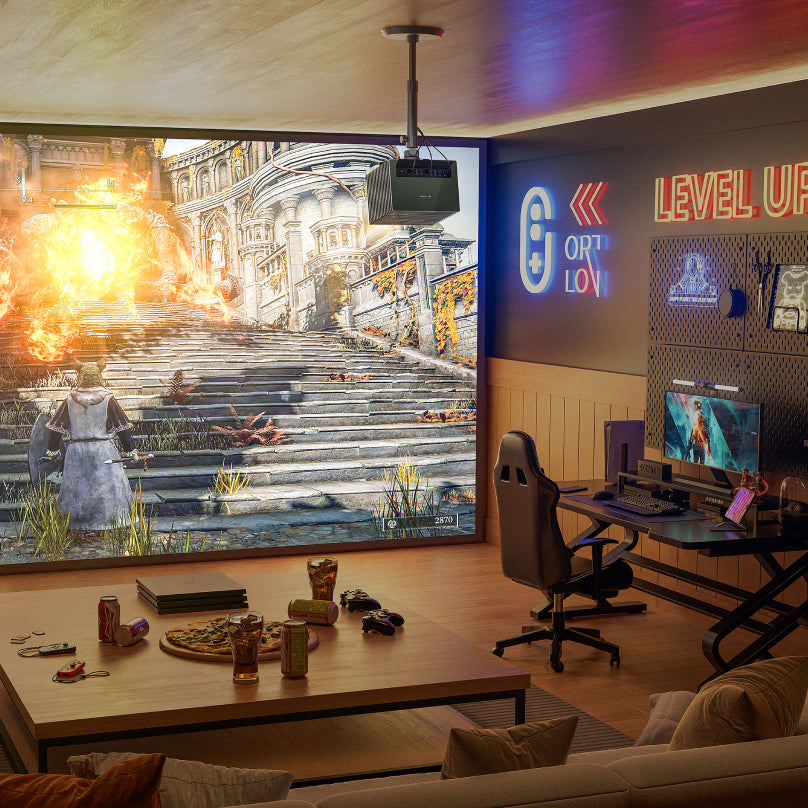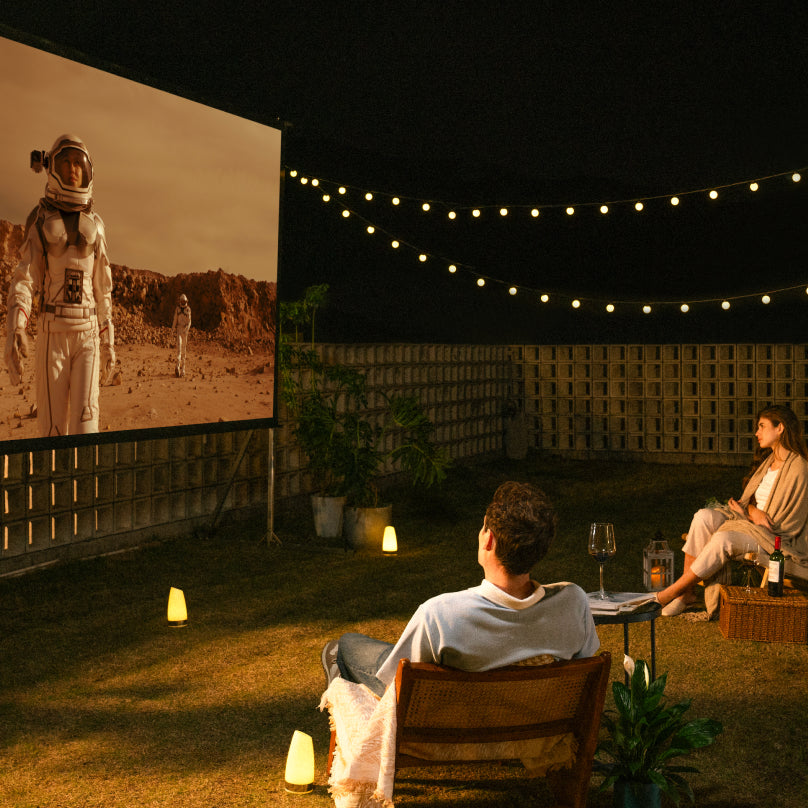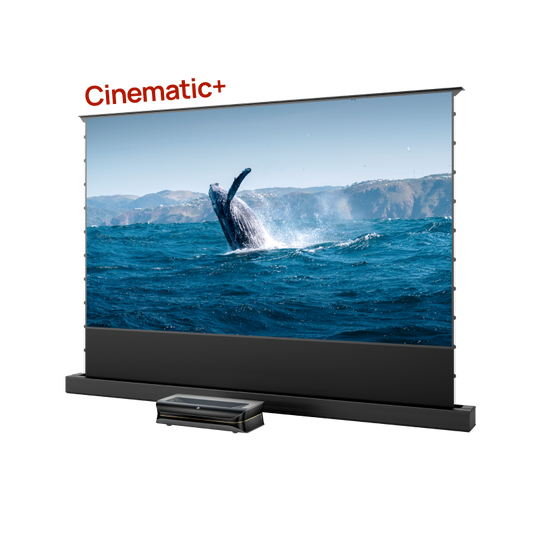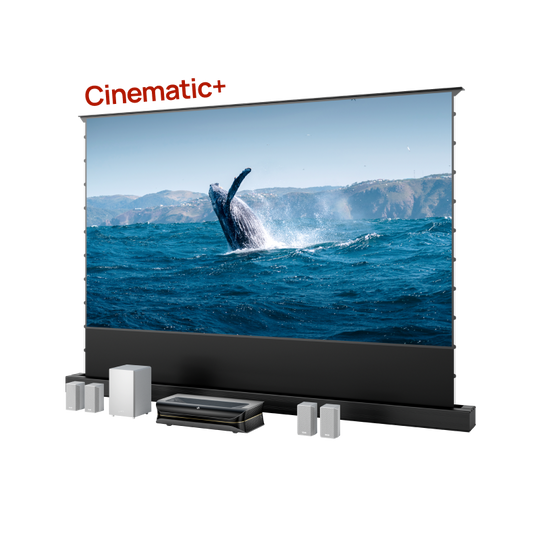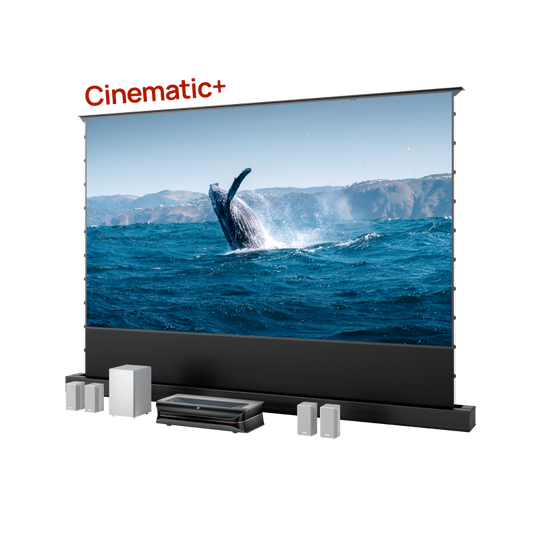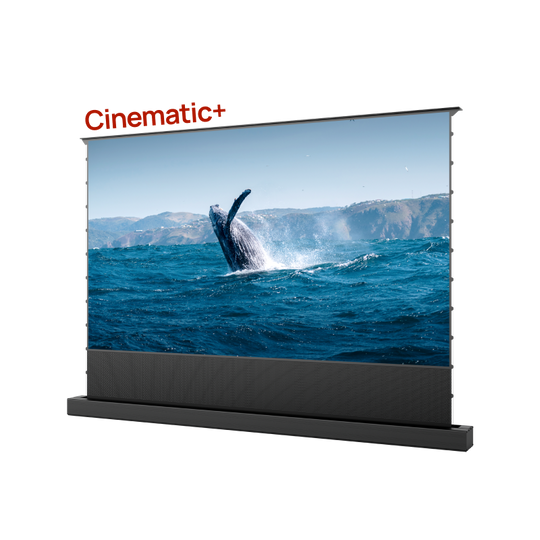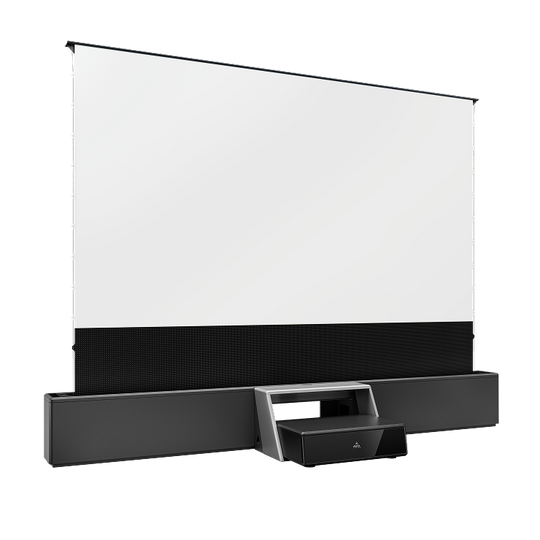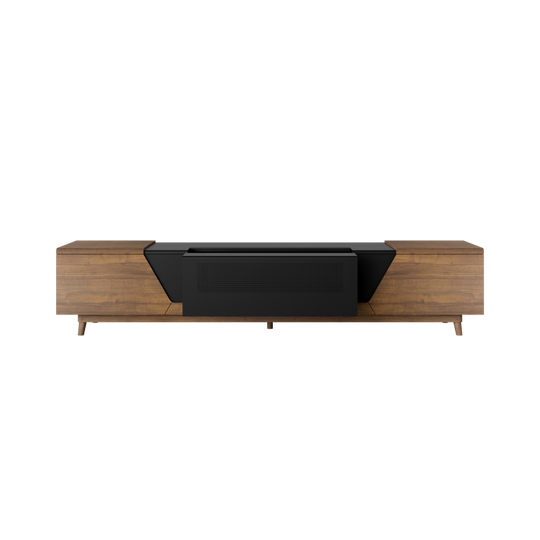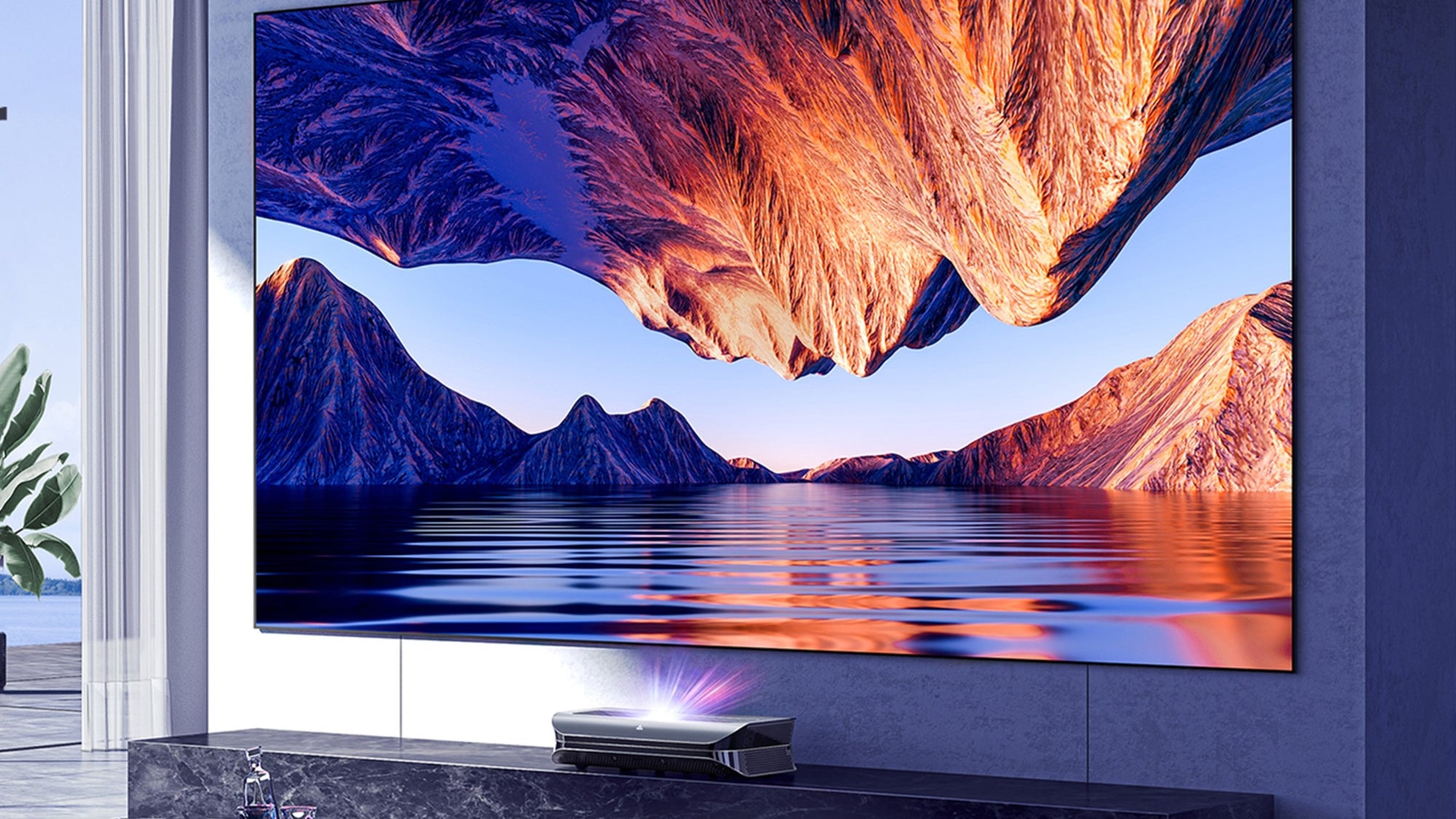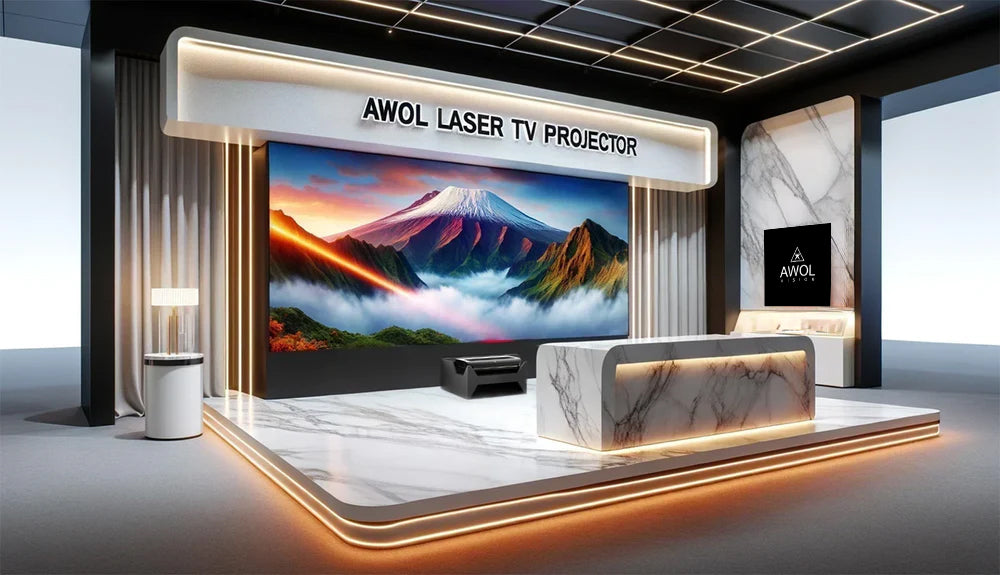Setting up a home theater requires selecting the right screen for an optimal viewing experience. ALR (Ambient Light Rejecting) and CLR (Ceiling Light Rejecting) screens enhance picture quality in varying light conditions, especially when paired with UST projectors. These screens outperform traditional white fabric options. To make an informed decision for your home theater setup, it's crucial to comprehend the differences between ALR and CLR screens.
What are ALR and CLR Screens?
ALR are projector screens designed to reduce the light in front and reflect it away from the viewers, ultimately improving the viewing experience. These projector screens ensure brighter and bolder images providing great projections even in bright areas. Also, the contrast to black ratio helps ensure images are clear in bright areas. However, you have to ensure this projector screen has a horizontal beam to get the best visual experience.
Meanwhile, CLR projector screens are the options of screens that reject light that comes from above while maintaining high quality and color accuracy. This technology ensures that your projection appears bright and clear even in bright areas. One of its unique features is the ability to focus on light absorption from all directions rather than reflection. This means you can place lights above the projection area without compromising the quality of images.
Comparing ALR and CLR Screens
When it comes to choosing between ALR and CLR screens, it's important to understand the differences in how they handle various lighting conditions. ALR screens are designed to perform well in an environment with multiple light sources, such as lamps, windows, and even reflections from walls and floors. However, if you have direct overhead lighting, like a bright ceiling light, you may notice some reflection issues on an ALR screen.
On the other hand, CLR screens excel in environments where the main source of light is a ceiling-mounted fixture, like in offices or conference rooms. They are specifically designed to block light coming from above, ensuring a clear and reflection-free viewing experience. However, CLR screens may struggle more with side or floor reflections, as their design focuses primarily on rejecting overhead light.
How to Choose the Right Screen for Your Home Theater
Picking the best screen for your home theater demands careful consideration of different aspects, including:
Lighting
You need to look around and note the sources of light in your home theater viewing area. Note if the source of light comes from the ceiling lens or from those natural sources like windows. If the front is dimmer than those in the lower back or when lighting comes from above, go for the ALR screen. Alternatively, you can consider CLR ones when you have strong ceiling lights.
Projector type
When sensors change the way they perceive the world, humans will have to adapt as well, being mindful of the image quality generated by the varying projector models. The amount of light, color range, and contrast ratio affect which combination suits ALR or CLR screen for top performance. Therefore, you need to take time to find out the very specification that you need before going shopping for any screen.
Room setup
Furniture positioning really matters in the creation of a screen viewing friendly environment. The viewing area may be blocked due to seating or decor, negatively impacting the screen images. Making sure that there are no barriers to be encountered that can hinder the overall viewing experience is a crucial concern before your home theater breakthrough.
Screen size
In today's world, having the ability to personalize your home theater experience has become incredibly important. One key aspect of this is being able to choose the size of your screen to perfectly suit your preferences. When you're shopping for a new screen or projector, you'll want to consider the aspect ratio, which refers to the width and height of the screen. This aspect ratio should match the type of content you plan to watch most often. For example, if you love watching widescreen movies, you'll want a screen with a widescreen aspect ratio like 16:9 or even 21:9. This will ensure the movie fills the entire screen without cropping some parts.
Conclusion
In summary, choosing the right screen for your home theater will impact the overall viewing experience. You must strike balance between environmental suitability along with other aspects such as projector type and room setup. With this knowledge, it'll become easier to confidently pick between ALR and CLR screens.

